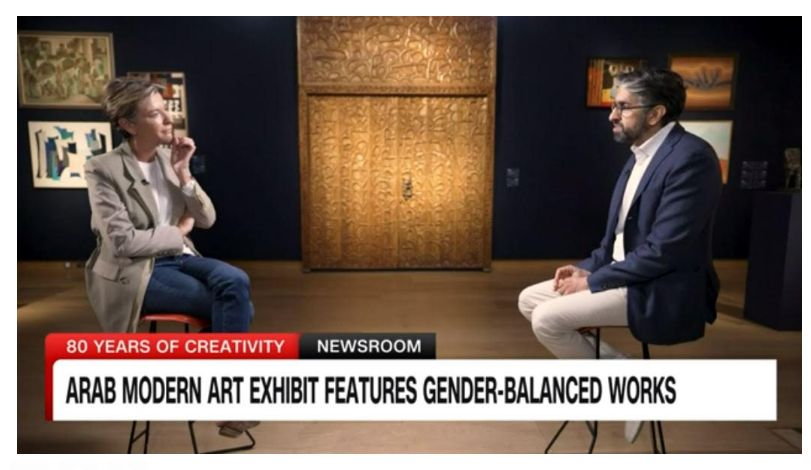The largest exhibition of modern and contemporary Arab art to be held in London is now open at Christie’s auction house, in partnership with the Barjeel Art Foundation and the UAE Ministry of Culture.
The gender-balanced display includes more than 150 works from 1939 to 2023.
CNN’s Becky Anderson sat down for an interview with Sultan Sooud Al Qassemi, founder of the Barjeel Art Foundation, about the works on display and the significance of the exhibit.
Key quotes from Al Qassemi:
On ensuring this is a gender-balanced exhibit:
“It’s important to show that women were also active in the mid 20th century, and they were active in many different forms of metal and materials of art, such as the use of batik the use of brass, the use of ceramic glassware, tapestry.”
“And I feel like the the gender imbalance in Western Museum is definitely something that we should not be emulating in other parts of the world. And I thought I have the opportunity to take a radical step and say no more from now on, we will only be showing a gender balance displays across our exhibitions.”
On the social justice and political narrative prominent in the exhibit:
“There are several kinds of political art there are artworks created by artists who were political artists, such as Khadiga Riad… She hosted in her home gatherings of the art and liberty group in Egypt, which was a radical leftist group that stood up for artists in Europe at the height of the Nazi suppression of artists before World War Two.
On the other hand, you have artists who created political depictions in their work, such as Leila Nseir of Syria. Many others – Mona Hatoum, for example, of Palestine – and so many other women across the course of the second half of the 20th century, depicting political events that took place in the region through their material and their creations.”
On the market for Middle Eastern art:
“The market is quite fascinating because you do have world records that are being set by modern artists…This, I think, is a reflection of the global interest in the Middle Eastern Art. And also I think a signal to younger artists that they can make a life and livelihood out of creating art.”
On the misconceptions about the region that the exhibit hopes to address:
“There’s a lot of misconceptions about, for example, the rights of minorities in the region historically, which is why we emphasize on religious minorities in all our exhibitions.
So going forward, how can we reflect the cosmopolitan nature of the Arab world in the mid- 20th century that included all these diverse minorities and diverse groups while rectifying and correcting the mistakes that the majority had maybe done towards these minorities?”


